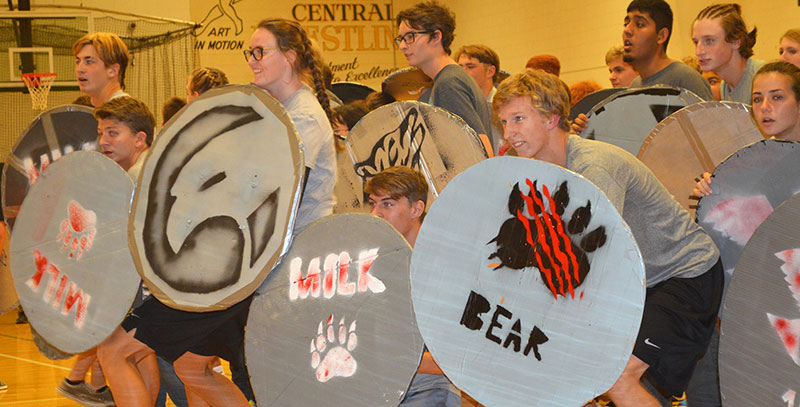For the past 10 years, juniors and seniors in Brad Anderson’s World History class have come to expect that they will spend six weeks studying ancient civilizations and empires. But it’s how they study them that’s unique: They create them.
Groups of 15 or so form “communities” to develop their own name, language, leadership structure and laws, all of which evoke their classroom study.

They spend time in the woods on school campus constructing and taking turns guarding their shelters; making, trading — or stealing — tools and other supplies of the era such as replica Viking boats; and participating in team-building activities.
“This (unit) is like the big rite of passage in our school,” said junior Lille Nowak.
Then they do battle — along with students from two other world history classes — using soft bouncing balls instead of spears, and shields made from cardboard or foam instead of metal. The gymnasium melee is waged in a closely packed, phalanx formation, like warriors in ancient Greece.
“It puts you right there, in the position of those you’re learning about,” said junior Reece Davis. “This way, it’s more like you are living the experience than just looking at it or reading about it.”

After a winner and a loser are declared, Anderson’s students form a singular, working government — dubbed V-C Coalition this year, from the names of rival sides Varydian and Carpe Terra.
Anderson’s hope is to bring history alive, and that it does.
“Over the long haul of going through this experience,” he explained, “I definitely see how much better theycan closely relate to the difficulties of making a civilization, and the melding of two or more cultures, and the challenges of living with groups you don’t share a language with.
“And over the rest of the year, when we talk about the different conflicts through history, I can draw parallels between those to their own experiences out in the woods or in battle.”
CONNECT


















